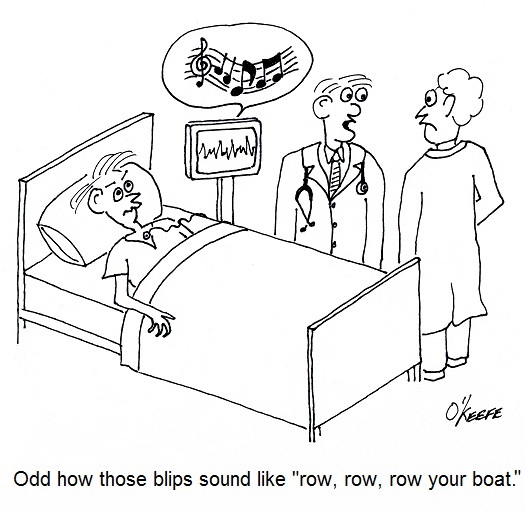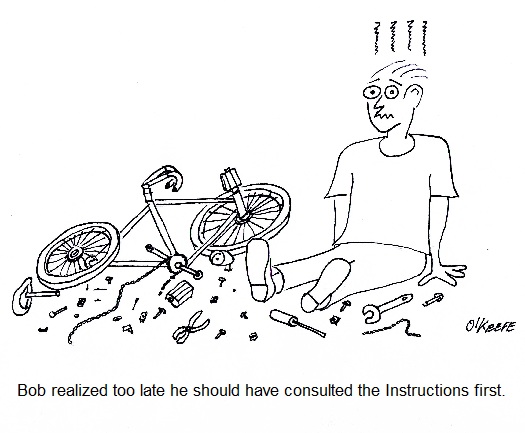| Last time we wrapped up our discussion on the development of quality control instructions for use during the Development stage of the systems engineering approach to medical device design. These instructions are used to guide quality control inspection and testing during the Production stage. Now let’s continue our discussion on the development of instructions for the Utilization stage, the stage when the medical device is actually put into operation by the end user.
In the systems engineering approach to medical device design, design engineers must work closely with technical writers, those responsible for writing operating and product service instructions. The objective here is to share the engineering staff’s intimate knowledge of the medical device’s design with the writers in order to ensure that instructions are clearly written, comprehensive, and follow a logical progression. Instructions must be written so as to be easily understood by lay people outside of the engineering profession and medical device industry, because most of the individuals using the device will be healthcare professionals and service technicians, individuals lacking a background in engineering or medical device development. Instructions are not only meant for the eyes of end users. They are also subject to review by governmental agencies. This fact acts as a safeguard to ensure device compliance both with regulatory requirements and industry standards as regards cautions and warnings. For example, instructions may be required to caution the user to allow the device to warm up for a certain period of time before use to avoid patient discomfort when coming into contact with cold metal. Instructions might also warn against a harmful interaction if the device is used in conjunction with other devices. For example, an electronic muscle stimulator may send electrical pulses into a patient’s body that can interfere with the operation of their heart pacemaker. No doubt this is something that the operator of the device and the patient would want to be informed of. At this point our medical device design has been completed, and instructions and procedures written, but the Development stage is not yet complete. Next time we’ll continue our discussion on this stage to see how a systems engineering step helps us to be safe rather than sorry after full production of the device has begun. ___________________________________________ |
Archive for January, 2013
Systems Engineering In Medical Device Design – Instructions, Part 3
Sunday, January 20th, 2013| Last time we looked at the objective of the quality control department in the Production stage, that being to ensure that the end product produced fits all requirements. We learned that to meet this objective a great deal of collaboration must take place in the Development stage between quality control staff and design engineers in order to produce a complete set of instructions for quality control inspection and testing. Now let’s see how these instructions are developed.
Inspection and test methods are devised by the quality control department to ensure that a completed medical device lives up to its intended use. What good is a diagnostic imaging machine that doesn’t provide accurate internal views of a patient’s body? Or a heart defibrillator that sends electrical energy pulses to a patient’s heart muscles when it’s not supposed to? Quality control instructions are developed to guide inspection and testing methods so they’re performed correctly and consistently during the medical device Production stage. The objective is to catch problems before they occur. For example, it can be specified that the plastic body components of a medical device be visually inspected after they are received from an outside vendor to check for undesirable defects, such as the presence of burrs, cracks, or non-uniform coloration. If anomalies are discovered, they’re documented, and the components are rejected. In other words, they are barred from being used in the assembly process. Quality testing methods are varied. They may involve hooking up the completed medical device to test instruments to simulate all possible modes of operation and any anticipated glitches that may occur during testing. While hooked up, the device’s operation is measured against key parameters to ensure that all is working well, and the data gathered is recorded and analyzed to see if operation is within normal limits. For example, an electric multimeter could be connected to the power cord of the device to measure how much electrical current is being drawn from the wall outlet during operation. If current drawn is too high, it may be indicative of a defective electrical component, and an in depth examination would follow. Generally speaking, if test measurement parameters do not fall within acceptable limits as determined by previously established stakeholder requirements, then the medical device will be rejected by quality control. It will then be sent back to the manufacturing department, along with a detailed inspection and test report explaining why it was rejected. At this point the rejected device is either reworked or disposed of entirely. Next time we’ll continue our discussion on the development of instructions for the Utilization stage, the stage where the medical device is actually put into use by the end user. ___________________________________________ |
Systems Engineering In Medical Device Design – Instructions, Part 2
Monday, January 14th, 2013| Last time we discovered that clearly written instructions are one of the desired end results of the Development stage of the systems engineering approach to medical device design. We learned that one of the objectives of these instructions is to make sure the devices are manufactured in a cost effective manner and with minimal defects during the Production stage.
Other instructions created during the Development stage are those addressing quality control inspections and testing instructions. The objective of the quality control department is to ensure that, during the Production stage, the end product has been assembled correctly, making use of the prescribed parts, and absent manufacturing defects. This end is achieved by virtue of the fact that the quality control department staff is usually not under the management of the engineering or manufacturing departments, therefore they are positioned to offer an impartial assessment of the production process. An undesirable side effect of quality control’s impartiality is that because they are not intimately involved in the design process, a great deal of collaboration must take place between them and design engineers to produce quality control instructions which meet objectives. To this end, many discussions must take place concerning subject matters as diverse as requirements for component dimensions, component material properties, and the proper assembly of parts. Next time we’ll continue our discussion on the Development stage by further examining how instructions are developed to ensure that the quality control department meets its objectives while performing inspections and tests during the Production stage. ___________________________________________ |
Systems Engineering In Medical Device Design – Instructions, Part I
Monday, January 7th, 2013| You know those instructional inserts that come in just about everything you buy? If you’re lucky they’re a one-pager, showing a simple illustration of how your purchase works. But sometimes they’re multiple pages long, even approaching the length of a short story. This is often the case when the item in question is complex and contains many parts.
If you’re like some people you try to avoid reading these instructions, preferring to forge ahead to the assembly/usage stage as quickly as possible, and you’ve probably had your fair share of times that this approach didn’t pan out. You were forced to re-do things and crack open the instruction manual anyway. If the instructions were written clearly, you may have eventually come to regard them as indispensable. Clearly written instructions are one of the desired end results of the Development stage of the systems engineering approach to medical device design that we’ve been discussing. These instructions flow naturally from the finalized detailed design which has been produced earlier in this stage. Instructions aid consumers in the assembly, usage, and maintenance of the device, making for a satisfied customer. Instructions also aid in the efficient and proper manufacture of devices. Without them assembly personnel wouldn’t work as efficiently, and the end result might not be a desirable one. It’s easy for parts to end up where they don’t belong, adjustments to be off, etc. Just think about the last “assemble it yourself at home” project you were involved in. The desired result is for instructions produced to be well defined and capable of instructing line assembly personnel in the actual construction of the medical device that takes place during the Production stage. Subjects such as parts identification, assembly procedures, and layout of assembly lines are discussed, all of which are needed to plan out the manufacturing process effectively. The objective is to manufacture the devices in a cost effective manner and with minimum probability of defects. Next week we’ll continue our discussion on instructions, focusing on those that are produced during the Development stage that serve the purpose of guiding quality control technicians during the Production stage. ___________________________________________ |







